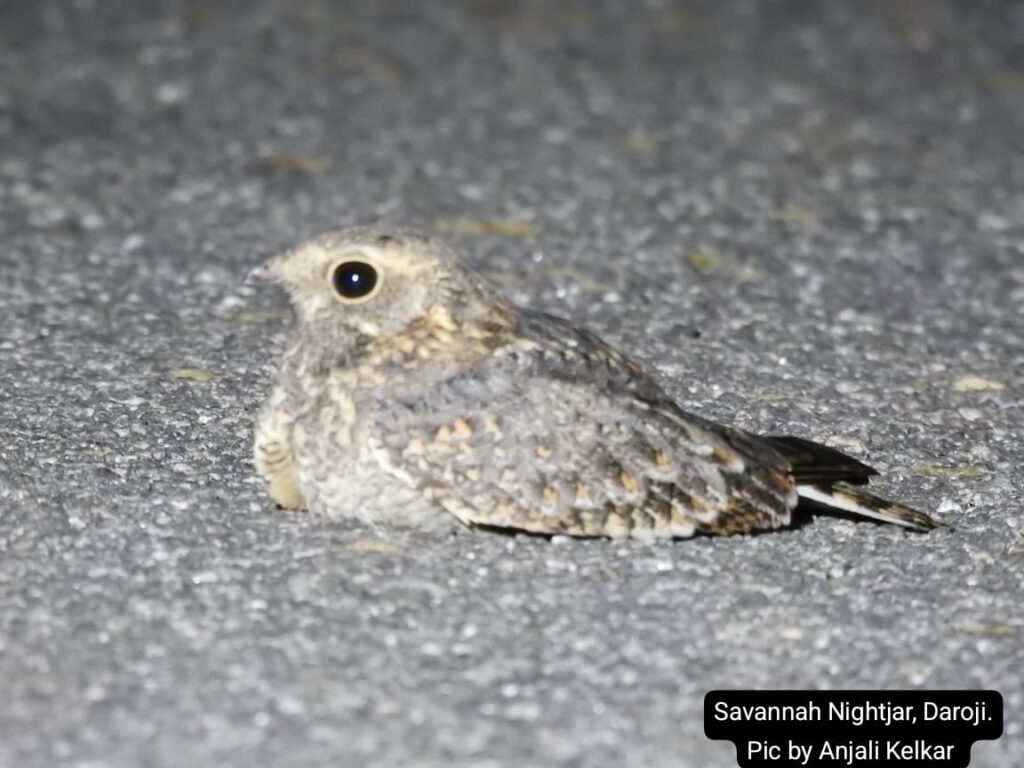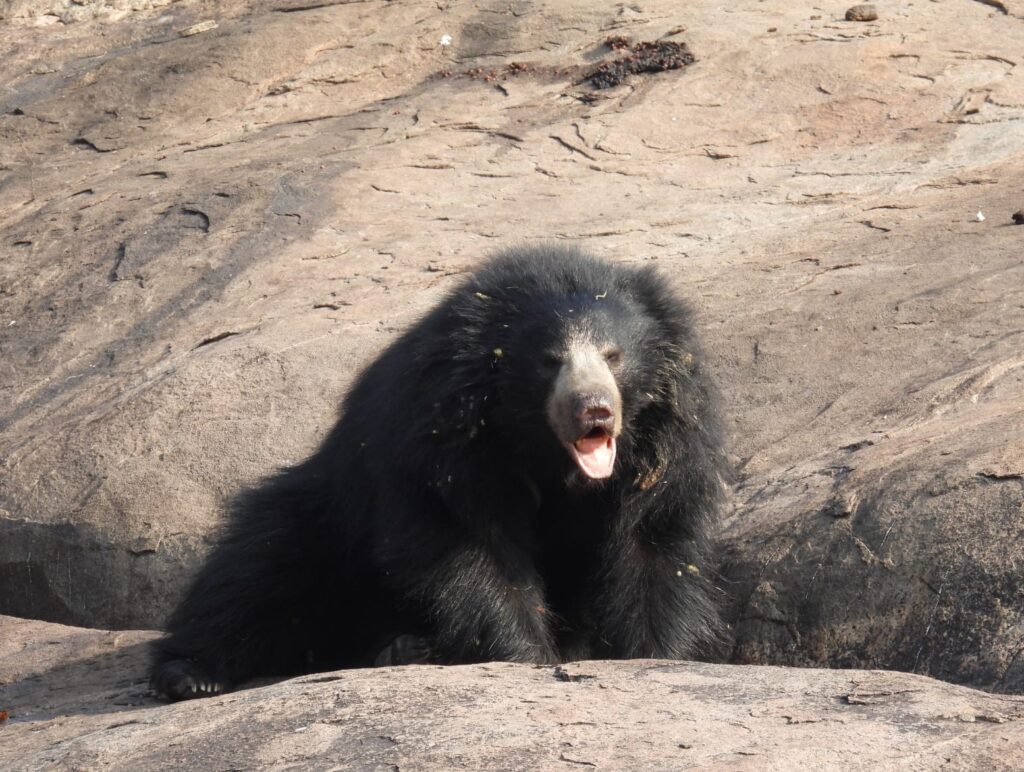
GREEN MINUTE NEWS:
The Savanna Nightjar has been directly sighted and recorded recently in Daroji Sloth Bear Sanctuary, Hampi, Karnataka. Known for its excellent camouflage abilities, its sighting and observation has brought three cheers to birders.
In the recent years, the Hampi-Daroji landscape in Karnataka has developed as a big birding destination in India. As part of Nature India Tours to the Hampi and Daroji region, a routine bird survey on November 9th revealed the presence of several Indian Nightjars which is a regular species in this region.

According to ornithologist Adesh Shivkar’s post on Instagram, one bird stood out clearly – noticeably a larger bird with a different plumage. It was identified as Savanna Nightjar, rarely seen this far south. Although it is common in northern parts of India but the Savanna Nightjar rarely migrates south – towards Karnataka. In fact, Anjali Kelkar from Mumbai, part of this group swiftly captured a stunning image of this rare bird.
Speaking to Green Minute, Anjali Kelkar who is a birder and has traversed across India for birding said they were on a night trail looking for nightjars. She added, “On 9th November at 7.15 pm, just outside the Daroji Sloth Bear Sanctuary, a bird came and sat on the road. As we put on some light, we observed this bird with different colours and markings but it flew off immediately. The identity of the bird was confirmed by Adesh Shivakar as it gave a call.”

Till date, the presence of Savanna Nightjar has been reported on e-bird app only through its calls but never directly sighted in the Daroji-Hampi landscape. The calls of this bird species have been observed in and around the Gunda Tree Park which is located on the backwaters of the Tungabhadra Dam in Hospet taluk, Vijayanagar district.
According to Pompayya Malemath, naturalist from Hampi, this is the first direct sighting and photographic recording of Savanna Nightjar around Daroji Sloth Bear Sanctuary. “Hampi is known for its rich biodiversity and a variety of bird species. It includes the big four – the Yellow Throated Bulbul, Painted Sandgrouse, Painted Spurfowl and the Indian Eagle Owl. The World Heritage Site of Hampi has emerged as a popular birding destination especially due to its proximity to the Daroji Sloth Bear Sanctuary,” Malemath adds.

Being a nocturnal bird, Savanna nightjar (Caprimulgus affinis) is most active during dawn and dusk. Usually sighted in open areas, this species prefers roadsides, grasslands and even rooftops. This species is found in south and south east Asia and usually spotted resting on the ground during the day and active in the night.
Compared to other nightjars, they are grey-brown in colour and are intricately patterned. The males have prominent white outer tail feathers and white wing patches. It has a distinctive calling which is often a high-pitched sound of “chreek-ik” which is repeated again and again. Having a very large geographical range, the Savanna Nightjar has been listed as “Least Concern” under the IUCN List.

PHOTO CREDIT: IMAGES 1 AND 3 OF SAVANNA NIGHTJAR BY ANJALI KELKAR, REST BY MEERA BHARDWAJ)
